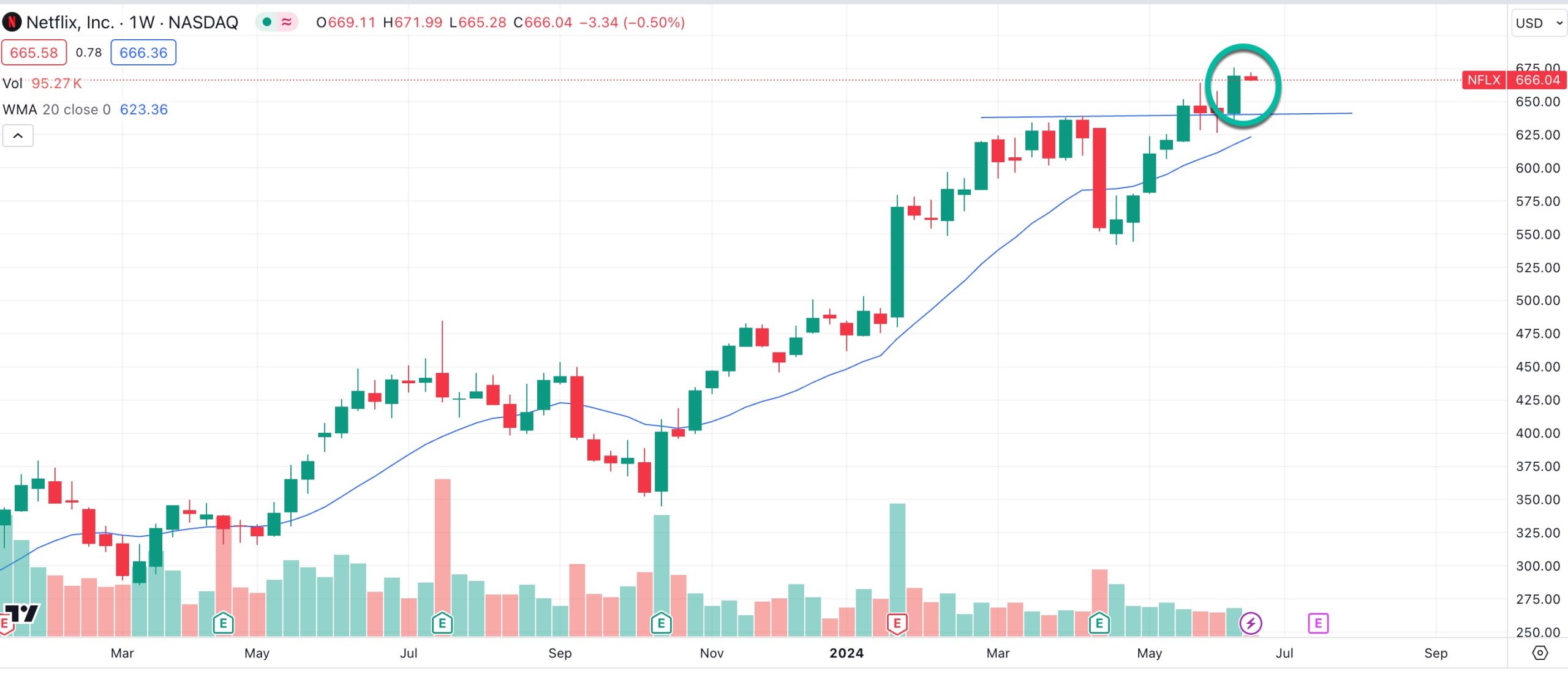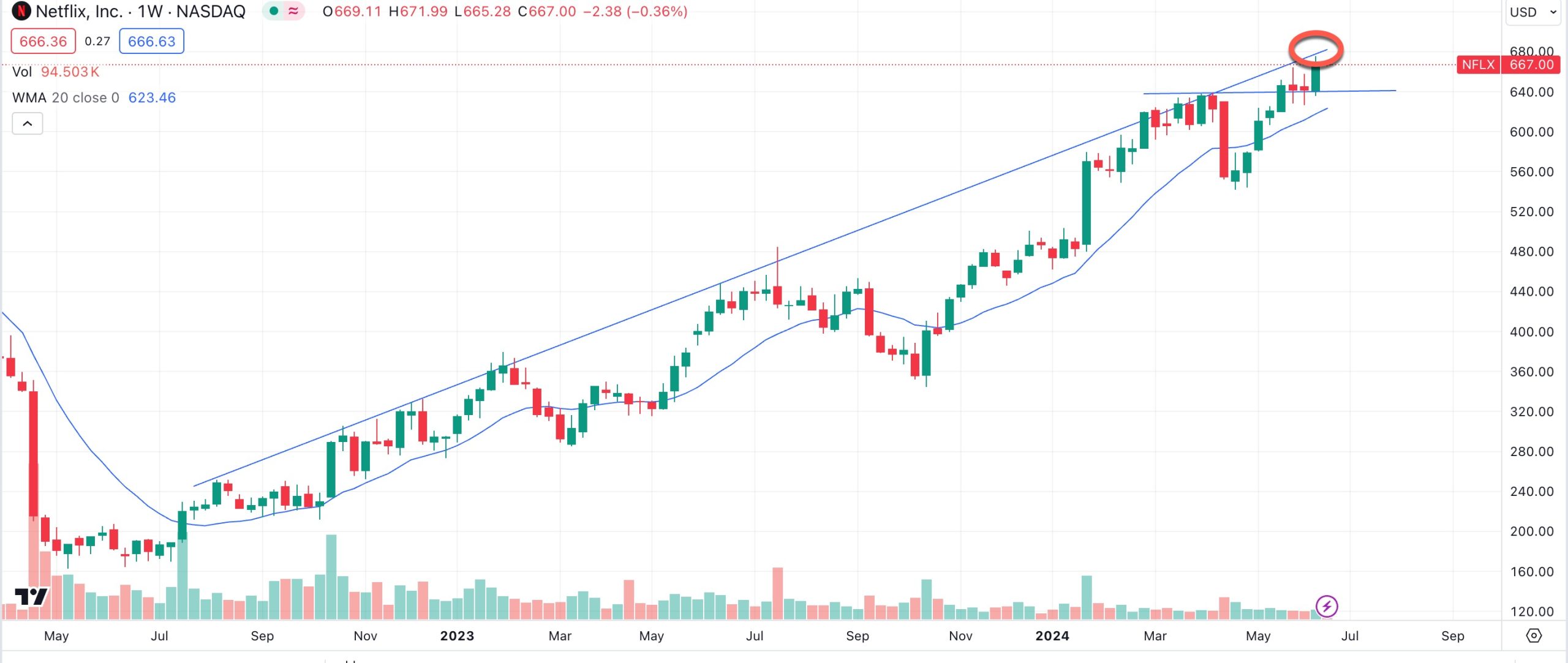1 Top Trader Just Bought Netflix
Is Netflix breaking out? If you are to believe Mark Minervini, a renowned trader with a very successful track record, the answer is yes, but there’s more to the story than meets the eye.
First let’s take a look out at the chart highlighting the recent breakout above resistance of Netflix. As you can see a few days ago the share price peeked above resistance, oscillated for a few days and then powered higher last Friday, the day when Minervini revealed he bought.
This is a classic type of breakout that Minervini has historically snapped up, and succeeded in making a fortune on. But what might surprise you is the rate at which such breakouts produce profits.
Key Points
- Netflix broke above short-term resistance, but hit long-term resistance going back 2 years.
- Netflix’s fair market value at $635 and its recent breakout show conflicting signals.
- Minervini’s success comes from cutting losses quickly and letting winners run, highlighting the importance of stop-losses and risk management in trading.
Will Netflix Go Higher?
Surprisingly, these breakouts don’t often work that well. In fact, if you take a look at the same chart, albeit from another perspective, it doesn’t look nearly as rosy.
In the chart below you can see that following the breakout, Netflix has just about hit a long-term resistance line going all the way back to 2022.
So while bulls can point to the recent break above short-term resistance, bears can point to the touching of long-term resistance as reason why a pullback is due.
From a fundamental perspective, it’s hard to see a whole lot of upside in Netflix, which is fairly valued at $635 per share according to a discounted cash flow forecast analysis.
But fundamentals don’t stop momentum when its in full swing. Look no further than Nvidia as an example of that. So will Netflix go higher or lower? It doesn’t matter, and here’s why.
Why Netflix Powering Higher Makes No Difference
Minervini has shared that his win-rate is actually not that high, meaning that buying such breakouts doesn’t actually have much better odds than a coin toss.
That may seem like a shocking revelation and perplexing when you discover that he’s made millions from the strategy. So what explains the apparent conundrum?
Simply put, when the breakouts do work, Minervini rides them to ever higher prices. And when they fail, he’s quick to cut them with stop losses.
The math takes care of the profitability. If every winner averages 30% but every loses averages 10%, even with a 50:50 win/loss ratio, the portfolio ends up growing.
It highlights how every trade placed should have a stop-loss in place, because it alone can be the determining factor between a portfolio that steadily grows over time and one that flatlines or falls.
Plus, by setting that stop-loss in place prior to entry you have already committed to exiting at a small loss, and therefore limit the risk factor of seeing your new position fall, and getting emotional and buying more to average down, which often is the absolute worst strategy.





